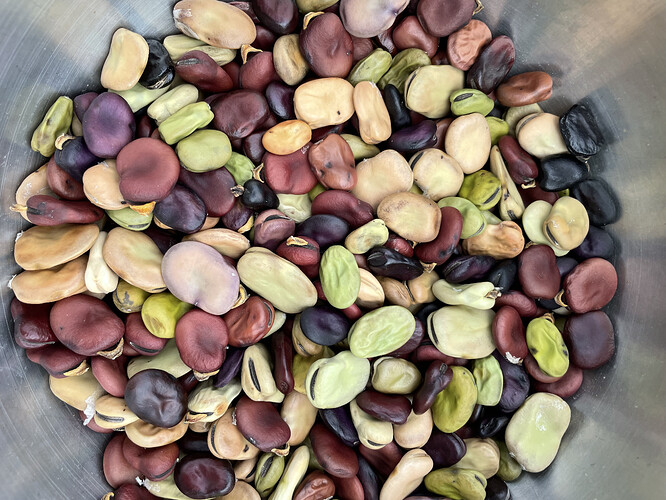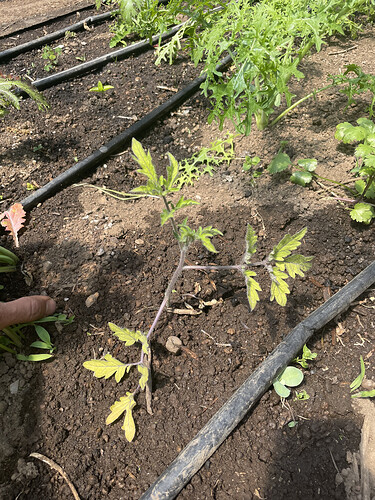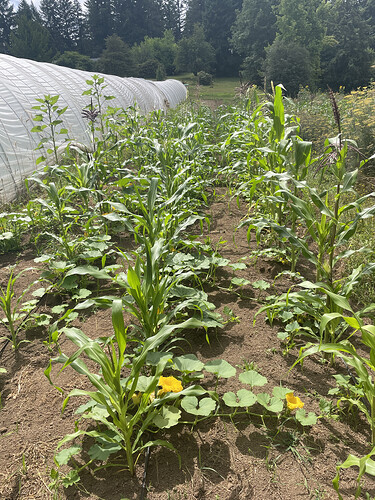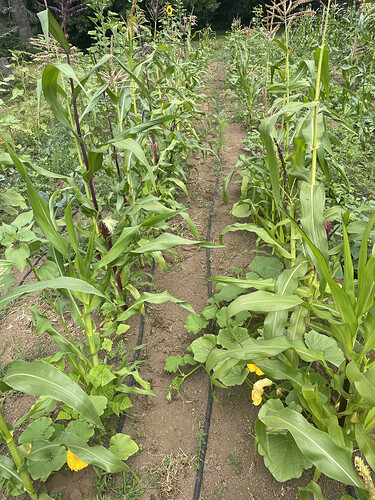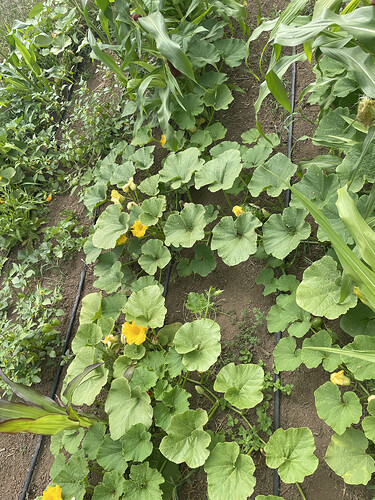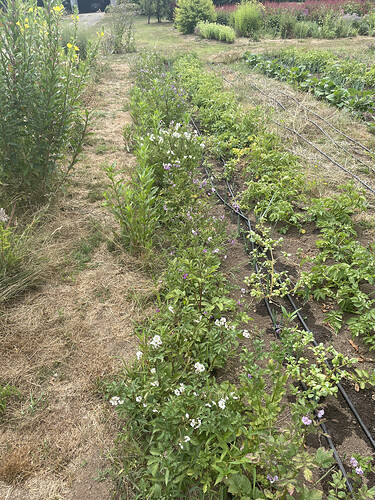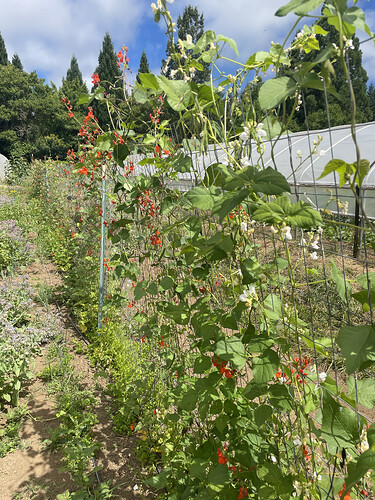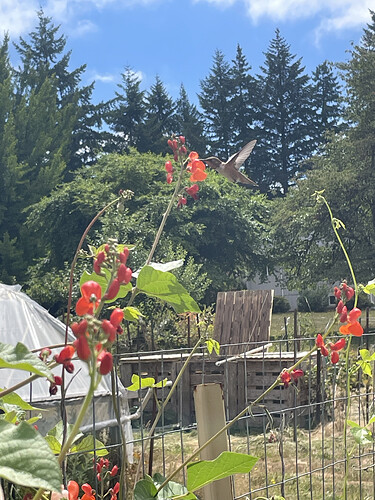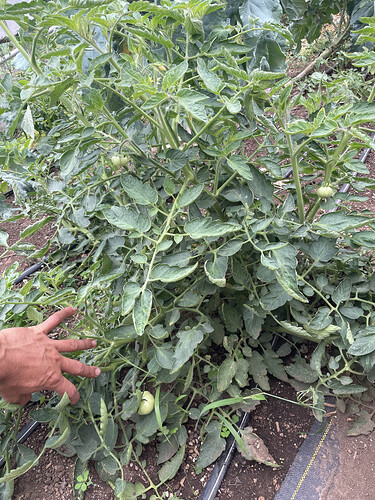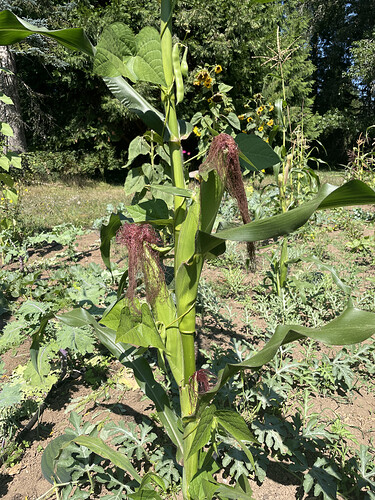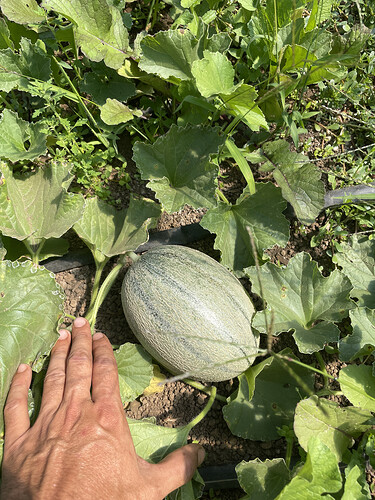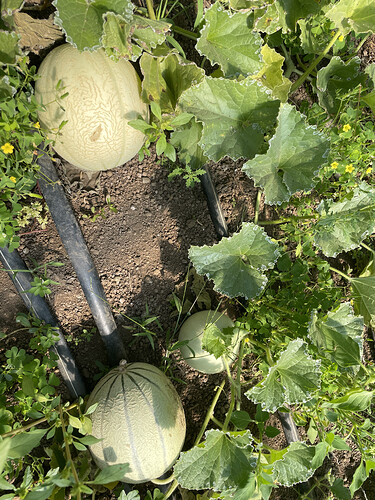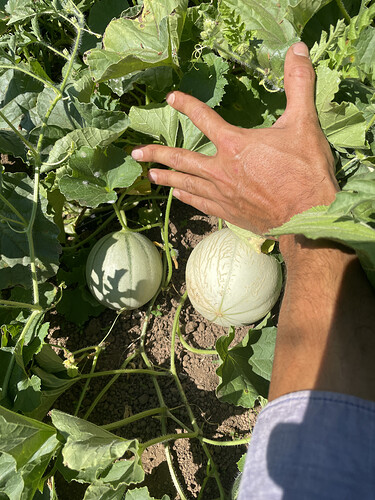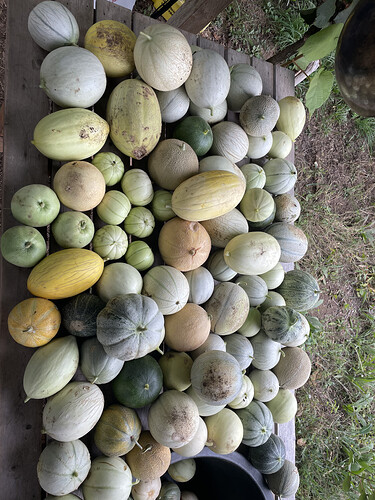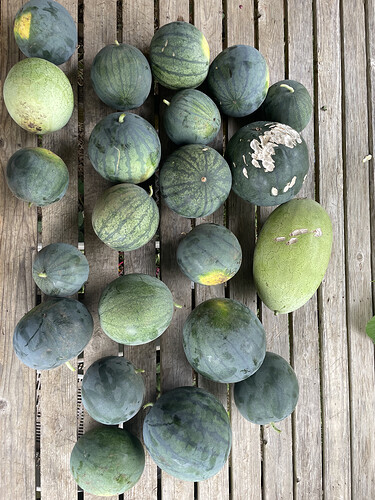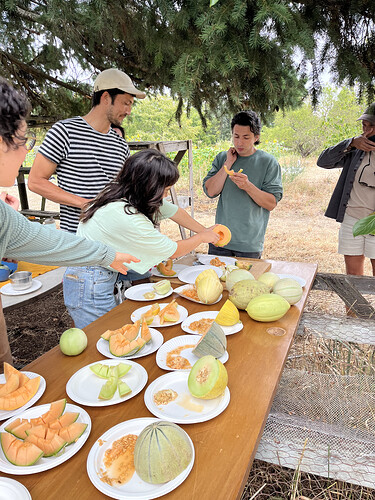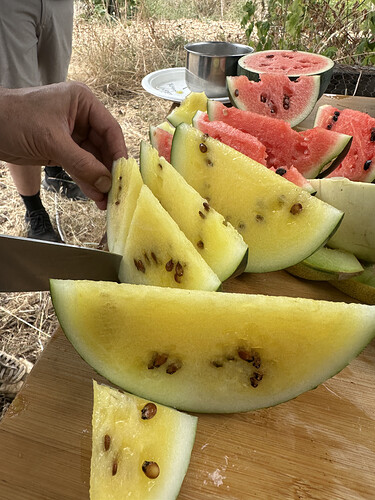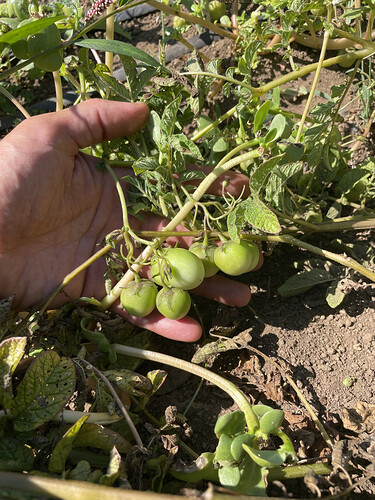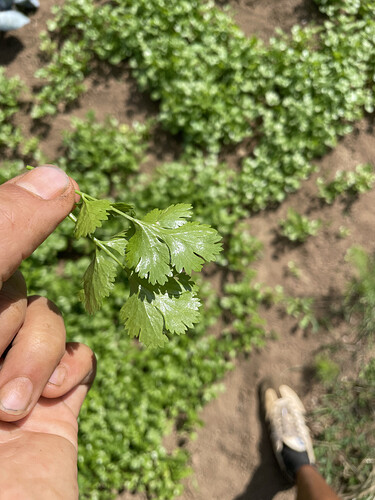May Updates
Favas -
Favas are looking really good! 6 inch spacing feels a little close to me, but it seems like a common recommendation. At least a close spacing means more individuals and more diversity. There are already flowers out, and lots of diversity showing up!
Favas coming up in a slightly shady spot. No irrigation.
We’ll plant some drought-tolerant greens alongside these favas. Amaranth, orach, purslane, magenta spreen, Taiwanese quinoa.
What diversity can you spot? Flower color, size, what else?
Brown flowers
Light purple/pink flowers
Pink flowers
Spinach -
Both spring attempts at spinach largely failed, almost definitely due to symphylan pressure. We only had a few individuals that survived, and it’s now a bit late so we are giving up on a spring crop for this year. We’ll try again for a fall crop. Still have tons of seeds from last year, so we will broadcast really heavily in the fall.
Tomatillos -
Overview: We are continuing into year 3 of our tomatillo adaptation project. Over the last few years we have grown lots of tomatillos; although we enjoyed some of the colorful varieties like purple ones and the golden Queen of Malinalco, we ultimately decided that we value tomatillos primarily for green salsa. So our only selection has been for vigorous plants with large ish green fruit.
2024 saved seeds
Planting Details: We start tomatillos April 1, and transplant them into a greenhouse when the weather warms up and plants are 6-8 in tall, around early to mid May. This year we are also trialing a few plants outdoors as well.
Lots of seeds, more starts than we can use; we prefer to transplant before any signs of flowers like these ones pictured
Our beets were destroyed by symphylans, so we transplanted tomatillos into these beds
Sad beets, symphylan survivors developed some leaf miner issues as well. But a happy tomatillo!
More happy tomatillos, sad beets
Promiscuous Tomatoes -
Overview: We are growing just a few plants of the Obligate Outcrossing tomatoes from GTS. We have no expectations, just excited to see what happens!
Planting Details: We start tomatoes indoors March 15, and transplant into a greenhouse when weather warms up, around mid May. Our greenhouses are important for other spring crops, so we tend to plant tomatoes into beds with other things growing in them.
Tomatoes looking good but some first signs of stress as we wait for weather to warm up
Looking ok in a dense patch of other crops
Sweet Corn
Overview: We are continuing into year 2 of our sweet corn adaptation project. We started with lots of diversity in year 1, including several locally popular varieties.
Seed stock is all saved from the farm last year
Planting Details: We direct sow sweet corn around May 1 as the first crop in our milpa-inspired field that will later have squash, cucumbers, melons, beans, flowers, and other friends. We plant 2 seeds together every 2 feet, leaving spaces that other crops will fill in. Corn is a joy to work with, in part because of how easy it is to plant!
Large field dedicated to milpa-inspired polyculture. Corn is in!
Overview: We are continuing into year 2 of our sweet corn adaptation project. Year 1 involved mixing a diverse collection of corn seeds
Planting Details: We direct sow sweet corn as the first crop in our milpa-inspired field that will later have squash, cucumbers, melons, beans, flowers, and other friends. We plant 2 seeds together every 2 feet, leaving spaces that other crops will fill in. Corn is a joy to work with, in part because of how easy it is to plant!
True Potato Seeds
Overview: We had a pretty successful first crop from TPS last year. We got a decent yield for eating, and were able to save a good amount of seeds.
Planting Details: We sow seeds in a tray inside around March 15, and transplant when the seedlings are a few inches tall and have some leaves.
Some spuds from 2024
Some 2024 fruits
Some 2024 saved TPS
Transplanted TPS
Runner Beans
Overview: We are growing out a diverse runner bean population to increase the seed stock for the GTS Seed Share. Our starting population is the GTS Mix, some added diversity from our farm and from Kay Everts, and 5 accessions from the USDA GRIN collection, originally from Mexico and Guatemala.
Planting Details: We direct sow runner beans outdoors around May 15. We use a 6 inch spacing and give them a trellis for support.
Accessions from GRIN
A close up of my favorite packet from GRIN. Diversity already included!
Final seed stock for 2025 planting
Barley
Overview: We have grown a little bit of barley over the years, and this year we decided to begin a full-on adaptation project. We sourced 12 hulless types, plus the GTS mix, and the Naked Barley Blend from Oregon State University. These might include a few winter-types, but we are hoping to select for spring sowing for now. We are hoping to select for vigor and yield with no supplemental fertility, limited irrigation, and easy processing.
Planting details: We direct sow barley around April 15. We opted to broadcast seeds, hoping for a final spacing of 6-8 inches.
Some of the final mix for 2025 planting
Collards
Overview: We are currently saving seeds from our 2024 collard crop. Our starting population was the Ultracross mix from Utopian Seed Project, plus a smaller amount of our two favorite varieties, Cascade Glaze and Champion (F1 Hybrid). We tend to have some symphylan issues with collards, though not as severe as with some other crops. Our goals are good yields, good flavor, and more symphylan resistance.
Flowering collards


